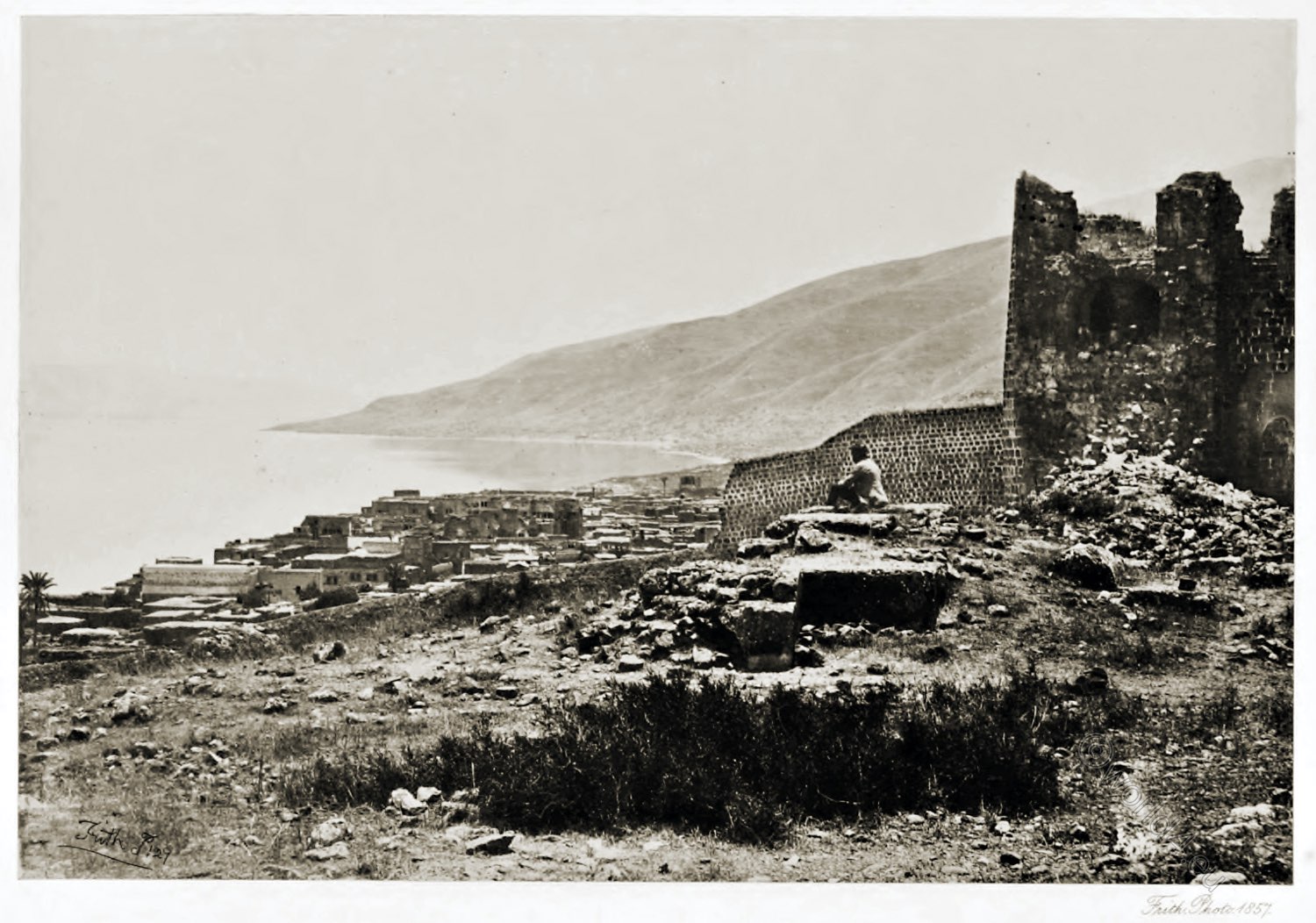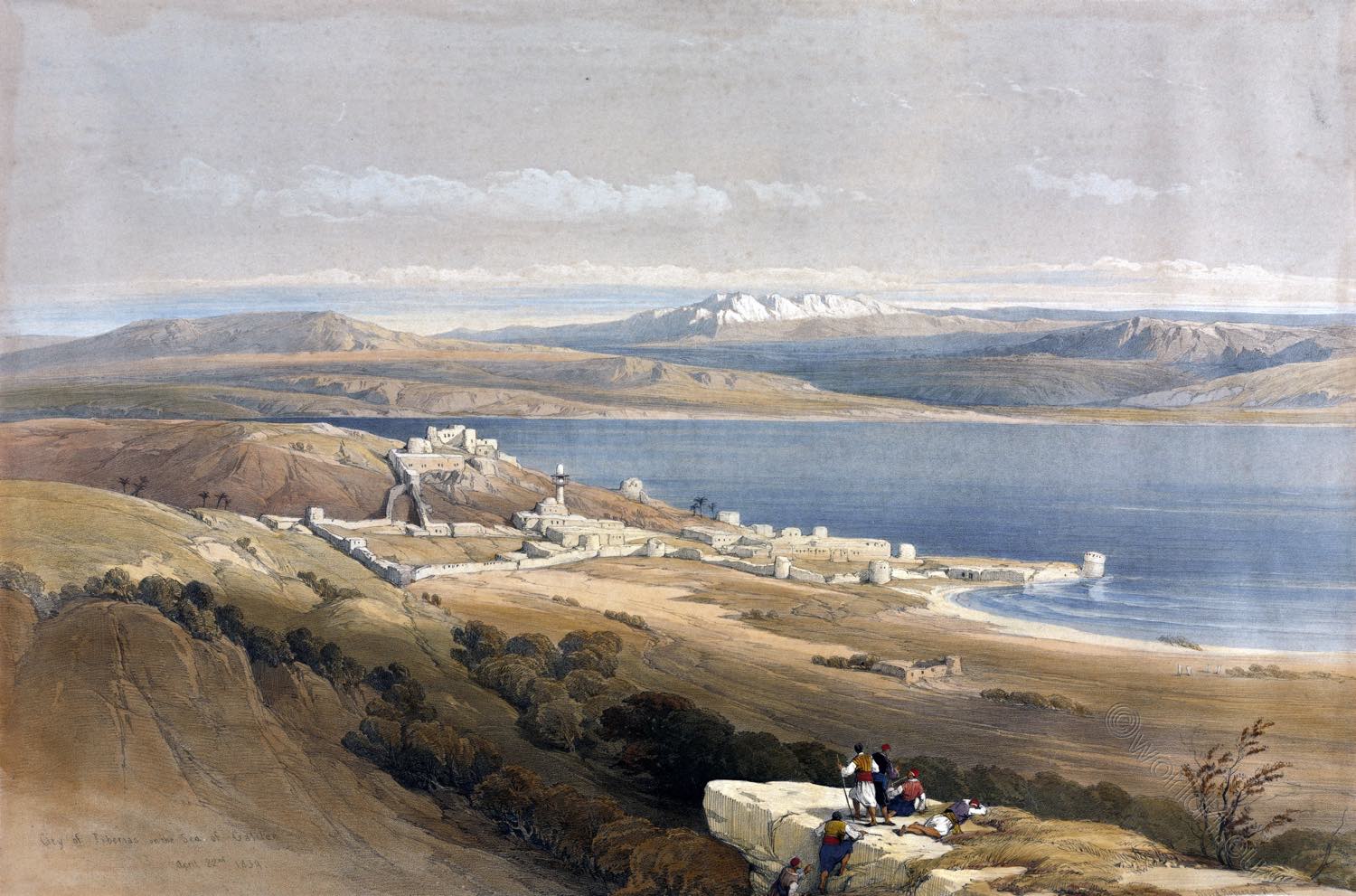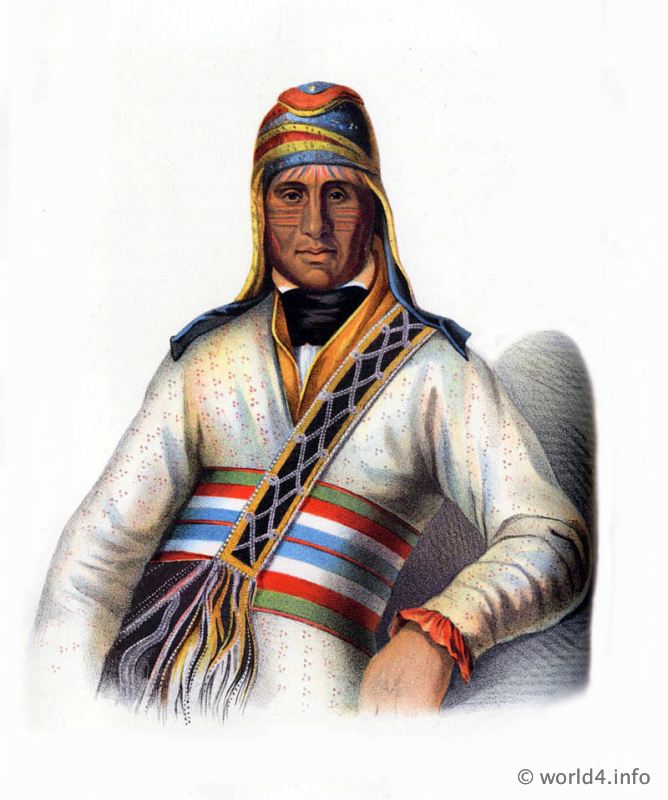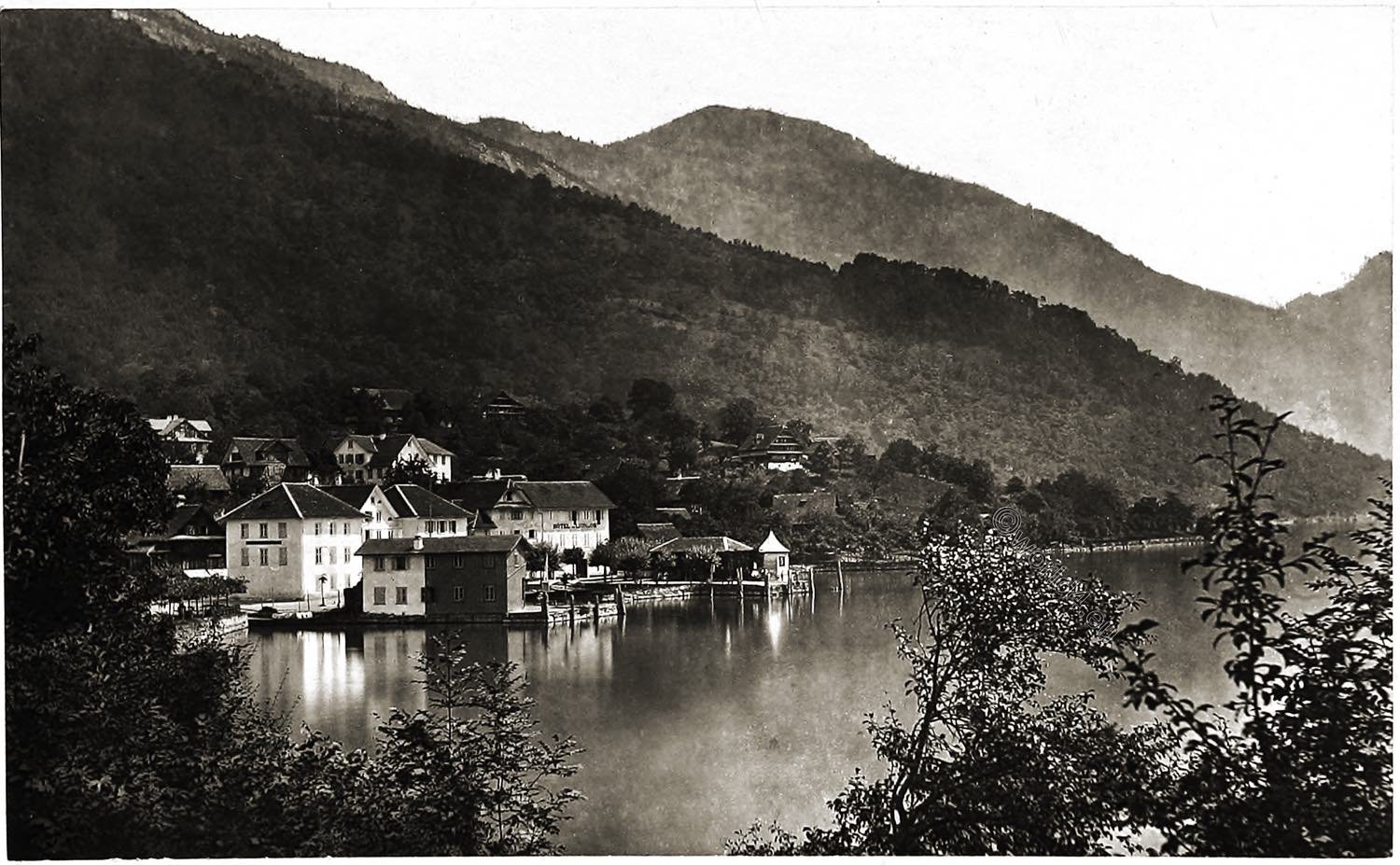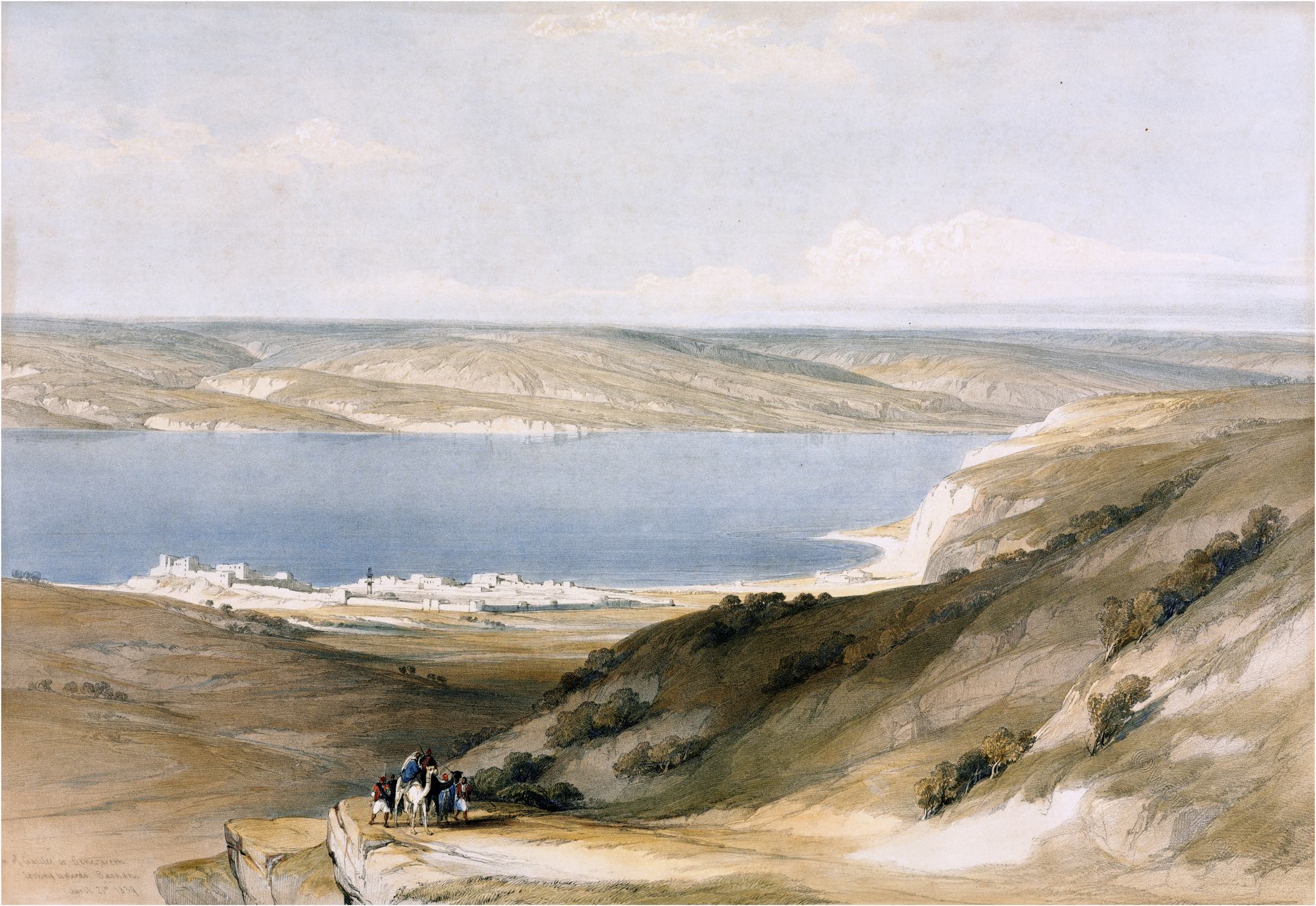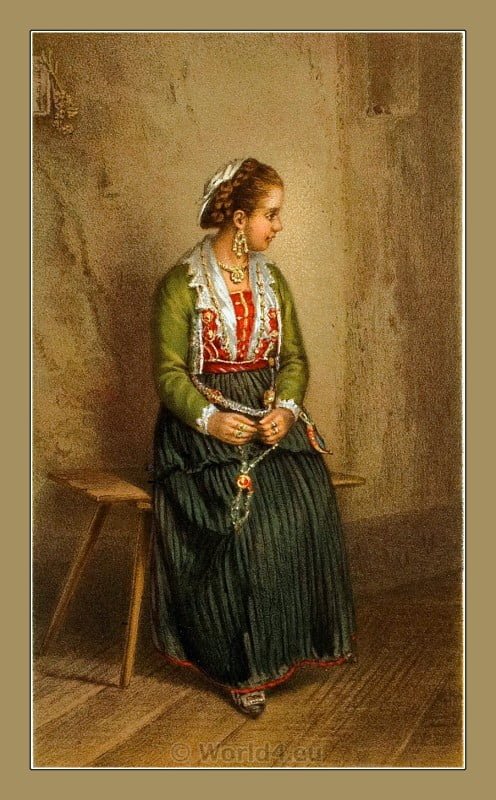THE TOWN AND LAKE OF TIBERIAS, FROM THE NORTH
by Francis Frith.
IT is early morning, at Nazareth, at the old camping ground, near the well of the Virgin. The tents are down—the men busy dividing the loads for the mules, which stand by, drowsily warring with the flies, whisking their tails, tossing the jingling bells about their heads, and peevishly stamping with their fore feet. The Bedouin who is to take me to Tiberias, via Mount Tabor, is squatting upon the ground at a little distance, smoking a short chibouk, with a dirty and faded cofeieh, or huge fringed handkerchief of yellow and red Damascus silk over his head and shoulders. His face is no particular colour, but resembles a piece of a well-worn saddle (the Bedouins never wash either their faces or their clothes). He has a short black beard and moustache, a stealthy cat-like expression, and an eye full of cowardly cunning and distrust. His horse stands by, picketed to his spear—a true Arab steed—but not at all the sort of thing which figures in romance.
I will describe him: a small, dark brown Irisk-looking animal — plenty of blood, and pretty well of bone, but amazingly little flesh; some rude mathematical figures burned into his “off” shoulder; head rather “light,” neck wofully so; no “crop,” but a shoulder like the hump of a camel; tail cut square, Melton-Mowbray fashion, but with a little tuft left long in the centre; the effect truly ridiculous—the ensemble as Dick Turpinish, gipsyish, hedge-bottomish a vagabond of a beast as you would wish to see matched even with a Bedouin.
And now my guide slings his long matchlock over his shoulder, and throws himself into the high-pommelled Turkish saddle, out-flanked by dirty blue rags and shabby dangling red tassels, and moves off with his knees almost up to his chin, and his preposterous old red morocco boots instinctively and incessantly swinging to and from his horse’s sides, so as to inflict at each step a gentle dig with the flat, sharp-cornered stirrup.
I follow at a smart “foot’s pace” up and down those monotonous hills, until we reach the base of Mount Tabor, which rises in singularly isolated beauty to the height of about a thousand feet. Its sides are covered with stunted evergreen oak and other timber, and on the summit are the ruins of chapels (for Mount Tabor has been erroneously held to be the Mount of the Transfiguration) and of Roman fortifications.
The view although very extensive, I thought had been rather over-lauded by some travellers. Descending, you pass through an undulating, uncultivated, but park-like country, covered with long grass, and studded thinly with small timber; then between two ruined forts, probably Saracenic, through corn-land, until, as the sun is sinking in the west, far beneath you, the town and lake of Tiberias break upon the sight—a calm, lovely, sacred landscape. The fields of ripe corn, stretching from my feet to the shores of the lake, were very rich and yellow; the lake was very still and very blue; the mountains of Moab, although monotonous in their outline, were soft and mellow in their colouring, and, in the far north, over the purple hills of Galilee at a distance of some forty miles, rises the snowy head of Mount Hermon; truly, it is a lovely scene!
My view is taken from a point immediately above the north-west corner of the town. It embraces a tower of the Roman castle, now partly in ruins (and a piece of modern brick wall, with which I would have given anything in reason to have been able to play the artist, and omit), the greater part of the present town, and the southern bay of the lake. Near the point of this bay is a little white speck, marking the site of the hot springs and baths, which have been celebrated from time immemorial for their healing virtues. The water, which is excessively salt and bitter, rises at a temperature of 140° Fahr. The present building was erected by Ibrahim Pacha, in 1833.
Source: Egypt and Palestine by Francis Frith (English, 1822-1898). Publisher: London, James S. Virtue, City Road and Ivy Lane. New York: 26, John Street. Publication date: 1858.
Continuing
Discover more from World4 Costume Culture History
Subscribe to get the latest posts sent to your email.

